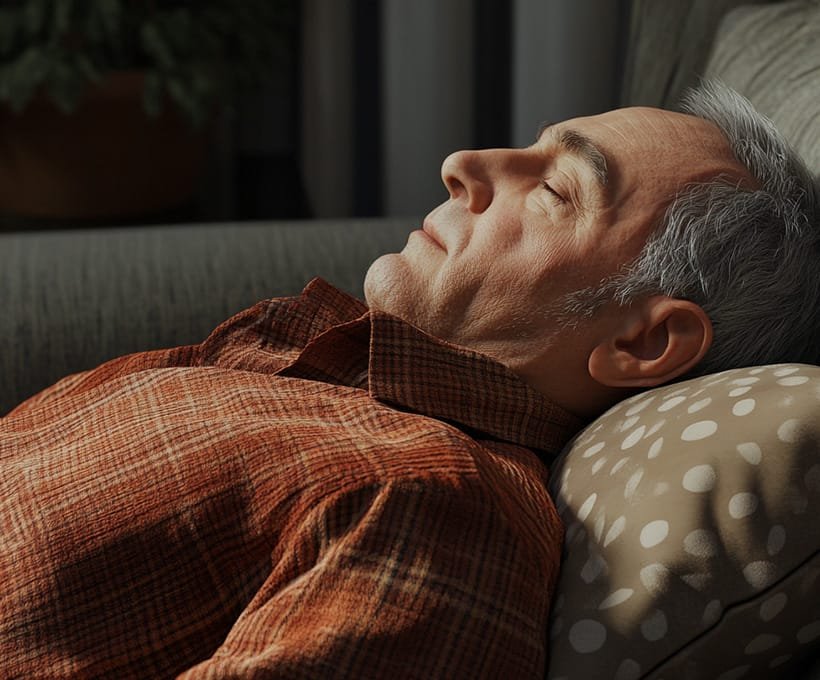Getting Started With The Position Of Comfort
The Position of Comfort is a horizontal resting posture designed to relieve gravity’s downward pull on your spine. To achieve this position, lie on your back with your knees bent. Supporting your neck and knees with pillows can enhance comfort, and you can use a chair to support your legs. If using a chair, ensure your knees are close to the edge, and the chair’s height does not interfere with blood circulation.
If this position feels uncomfortable or causes pain, try turning onto your side into a fetal position with your back straight and knees bent. Pregnant individuals should always use the side-lying position for safety and comfort. Additionally, cover yourself with a blanket, as your body temperature may lower during Relaxation Therapy (RT).
The Three Stages Of Relaxation Therapy
Relaxation Therapy consists of three simple yet effective stages:
1. Deep Rhythmic Breathing
Deep Rhythmic Breathing involves expanding your stomach as you inhale deeply through your nose to the count of four, then exhaling slowly through your mouth to the count of eight. This technique allows for greater air intake, fully filling your lungs and enhancing oxygen flow.
2. Deep Muscle Relaxation
RT incorporates deep muscle relaxation to help your body achieve a tension-free, balanced state known as homeostasis. This process releases muscle tension, reduces spasms, and helps your body restore its natural equilibrium.
3. Guided Meditation
The final stage of RT includes a guided meditation, typically led by audio instructions. This meditation helps center your mind, further deepening the relaxation process.
👉 Access the full collection of Relaxation Therapy recordings →
The Benefits Of Relaxation Therapy
Relaxation Therapy offers numerous physical, mental, and emotional benefits:
- Relieves Pain: RT reduces muscle tension, back and neck aches, headaches, and spasms.
- Improves Circulation: By relaxing the body, RT promotes better blood flow, delivering oxygen to muscle tissues. Oxygen plays a vital role in attacking lactic acid, a compound that contributes to pain.
- Natural Alternative: RT is a drug-free alternative to muscle relaxants, sleeping pills, and pain medications.
- Stress Reduction: With regular practice, RT helps develop relaxation skills that you can use throughout your day to reduce stress and tension.
Why Practice Relaxation Therapy?
One of the most significant advantages of Relaxation Therapy is that it is physically impossible to be relaxed and tense at the same time. The more you practice RT, the better you become at achieving and maintaining relaxation. Over time, these skills will help you lead a more balanced, stress-free life—no matter what challenges come your way.
👉 Explore the full Relaxation Therapy program →
📖 For a complete overview of Relaxation Therapy methods and benefits, see this guide.

